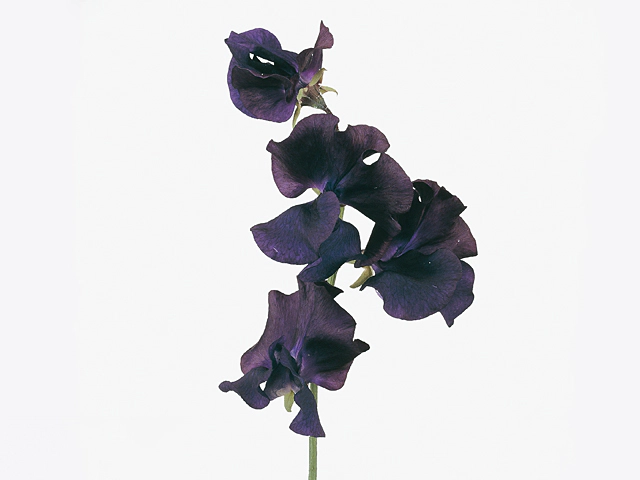Lathyrus odoratus other blue

| Fruit type | Pod |
| Leaf type | Foliage leaf |
| Flower color | Pink |
| Soil fertility | No poor soils |
| Inflorescence | Few-flowered |
| Structure (tissues) | Herbaceous |
| Light conditions | Sunny; Semi-shades |
| Plant, growth type | Climbing |
| Moisture requirements | Well-drained |
Lathyrus odoratus, commonly known as Sweet Pea, is a beautiful flowering plant that adds a touch of elegance to any garden or landscape. With its delicate pink flowers and climbing growth type, the Sweet Pea is a favorite among many garden enthusiasts.
The Sweet Pea plant produces pods as its fruit type, which adds an interesting element to its overall appearance. The foliage leaf of this plant is of the foliage leaf type, providing a lush and green backdrop for the charming pink flowers that adorn it. These flowers are a delight to the eyes and can brighten up any space.
When it comes to soil fertility, the Sweet Pea prefers well-drained soil and does not thrive in poor soils. Therefore, it is essential to make sure the soil is suitable for this plant's growth before planting it. Adding organic matter or compost to the soil can greatly enhance its fertility and provide a thriving environment for the Sweet Pea to flourish.
The inflorescence of the Sweet Pea is few-flowered, meaning that the plant produces clusters of flowers in small numbers. This adds to the plant's aesthetic appeal, creating a sense of charm and elegance. The flowers themselves are a lovely shade of pink, lending a soft and romantic touch to any garden or floral arrangement.
In terms of its structure, the Sweet Pea is an herbaceous plant, displaying soft and flexible tissues. This allows the plant to climb and wrap its delicate vines around trellises or other support structures. Its climbing growth type makes it an ideal choice for vertical gardens or for adding height to flowerbeds.
When it comes to light conditions, the Sweet Pea thrives in sunny or semi-shaded areas. It requires a good amount of sunlight to grow and produce an abundance of flowers. However, it can also tolerate some shade, making it versatile and adaptable to different garden environments.
In terms of moisture requirements, the Sweet Pea prefers well-drained soil, indicating that excess water should be avoided. Over-watering can lead to root rot and other issues, so it is important to strike a balance and ensure the plant receives just the right amount of water to keep it healthy and vibrant.
All in all, the Sweet Pea is a delightful plant to have in any garden. Its beautiful pink flowers, climbing growth type, and herbaceous structure make it a visual treat. With the right soil fertility, light conditions, and moisture requirements, the Sweet Pea can thrive and add a touch of natural beauty to any outdoor space. So, why not consider adding this lovely plant to your garden and enjoy the charm it brings?
Market availability index by month:
| Jan. | Feb. | Mar. | Apr. | May | Jun. | Jul. | Aug. | Sep. | Oct. | Nov. | Dec. |
|---|---|---|---|---|---|---|---|---|---|---|---|
| 1 | 1 | 1 | 3 | 4 | 2 | 2 | 2 | 1 | - | - | 1 |